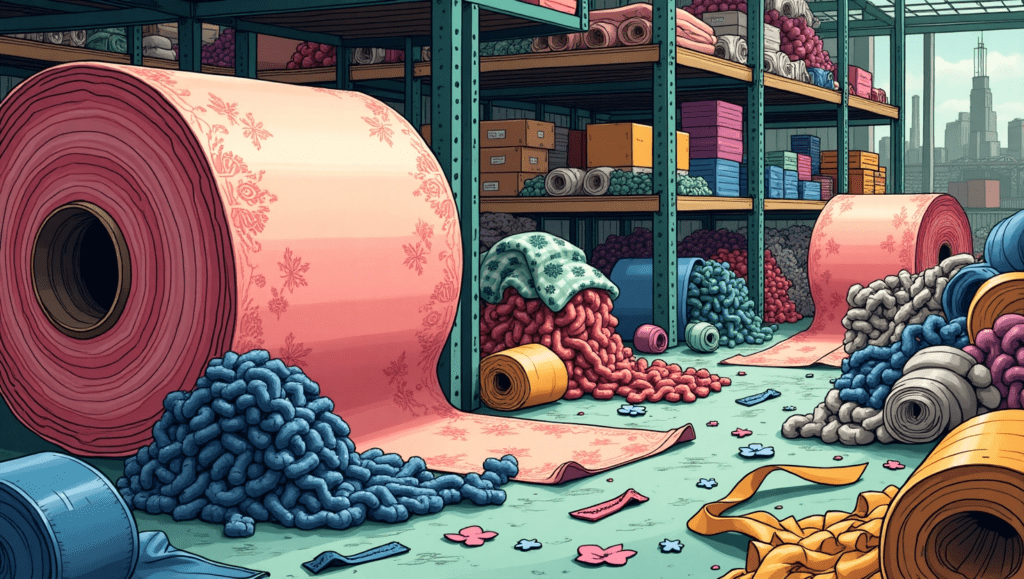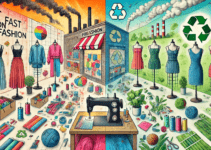fast fashion thrives on producing swish apparel at an accelerated pace and low cost. To achieve this, brands exercise accoutrements that are cheap, fluently popular, and quick to form. still, numerous of these fabrics come at an environmental and ethical cost. Let’s explore the most common or garden accoutrements exercised in whirlwind fashion and their jolt.

1. Polyester The King of fast Fashion
Polyester is a synthetic grittiness deduced from petroleum and is one of the most extensively habituated fabrics in whirlwind fashion. It’s popular because it’s cheap, featherlight, crinkle- resistant, and durable. still, polyester isnon-biodegradable and sheds microplastics into the terrain when washed, contributing to sea toxin.
2. Cotton The double-barreled- whetted Sword
Cotton is a natural grittiness frequently exercised in fast fashion due to its breathability and wimpiness. still, usual cotton husbandry is resource- ferocious, taking vast quantities of water and fungicides. While organic cotton is a more sustainable volition, it is n’t generally exercised in whirlwind fashion due to advanced product charges.
3. Rayon & Viscose Soft but Problematic
Rayon and viscose aresemi-synthetic filaments made from lumber pulp. They’re exercised to mimic the sense of silk, hair, and cotton but are budget to produce. While they appear from natural sources, the product process involves harsh chemicals that contaminate water sources and contribute to deforestation.
4. Nylon Stretchy Yet Unsustainable
Nylon is a synthetic grittiness frequently exercised in whirlwind fashion for activewear, swimwear, and hose. Like polyester, it’s made from petroleum- grounded productions, making itnon-biodegradable. Nylon product also generates nitrous oxide, a hothouse gas much more potent than carbon copy dioxide.
5. Acrylic The Budget hair cover
Tempera is a synthetic grittiness exercised to mimic hair. It’s cheap, warm, and featherlight but has penurious breathability and can beget face vexation. The product of tempera involves poisonous chemicals and contributes to microplastic toxin.
6. Merged Fabrics The Recycling Agony
To slash charges and enhance fabric parcels, fast fashion brands frequently exercise amalgamated fabrics, similar as polyester- cotton or tempera- hair composites. While these fabrics ameliorate continuity and texture, they’re delicate to reclaim due to the combination of synthetic and natural filaments, making them largely unsustainable.
The Environmental jolt of fast Fashion Accoutrements
The accoutrements exercised in fast fashion contribute to toxin, inordinate water operation, and carbon copy emigrations. Synthetic fabrics like polyester and nylon release microplastics, while cotton husbandry depletes water coffers. also, the chemical- ferocious processing of rayon and tempera farther harms ecosystems.
Can fast Fashion Come Sustainable?
Some brands are experimenting witheco-friendly accoutrements like recycled polyester, organic cotton, and factory- grounded filaments. still, for whirlwind fashion to truly come sustainable, brands must prioritize ethical sourcing, reduce waste, and inoculate in biodegradable accoutrements .
Conclusion
The whirlwind fashion assiduity relies on synthetic and resource- ferocious accoutrements to keep charges low and product presto. While these fabrics extend affordability and luxury, they’ve a significant environmental jolt. As consumers, being apprehensive of these accoutrements and making conscious fashion elections can contribute to a further sustainable future.


